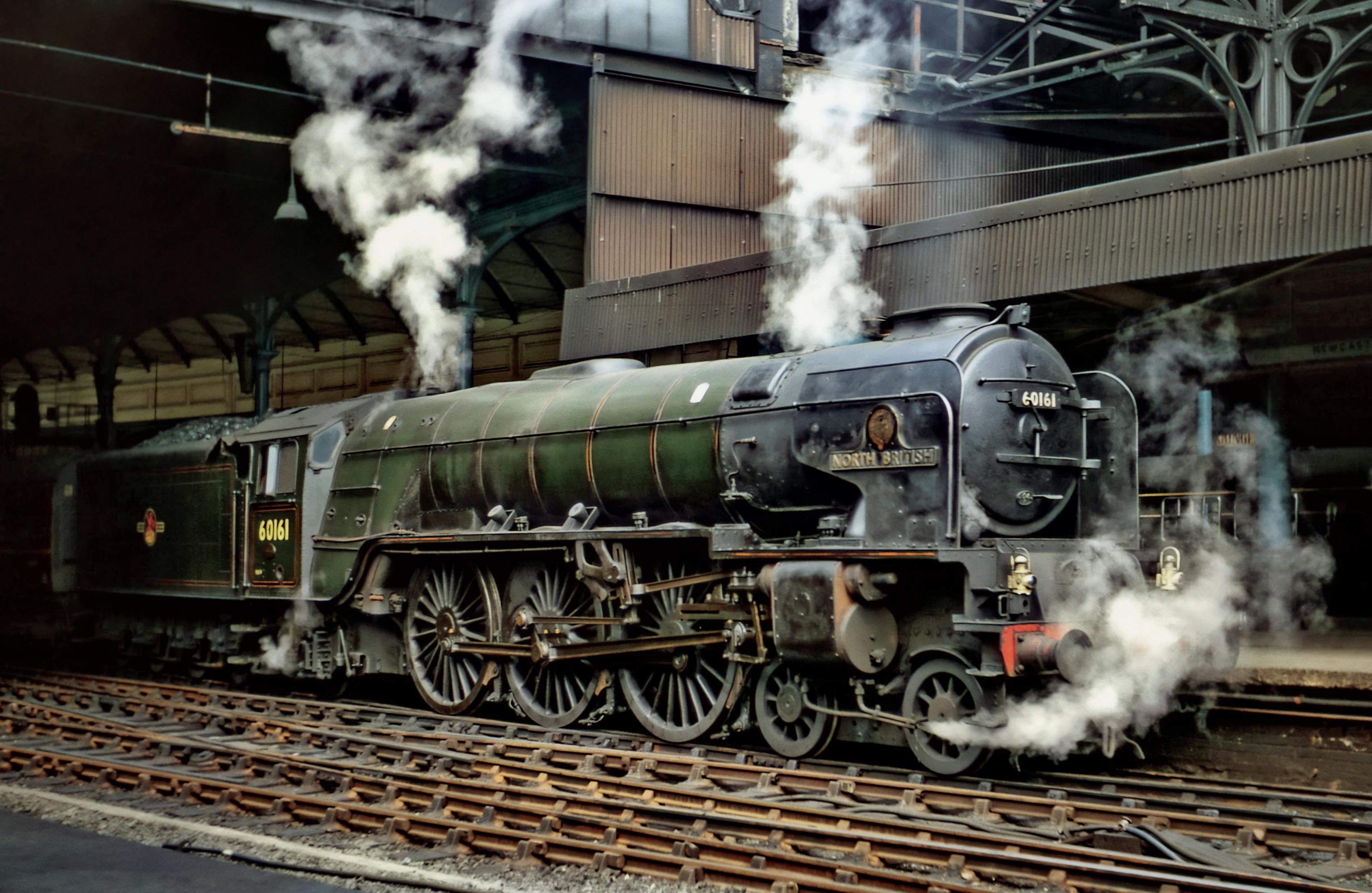

NEWCASTLE
Images from the Transport Treasury archive

Images from the Transport Treasury archive

At 300 years of age, the Causey Arch, seven miles southwest of Newcastle, predates the Stockton & Darlington Railway by a century and is the world’s oldest railway bridge. It was built in 1725 by a local stone-mason named Ralph Wood for the influential colliery owner Sir Henry Liddell, to carry coal from Tanfield to the Tyne for shipping. Visitors today can walk across the arch, 80-feet above the Causey Burn, and beneath its 100-feet span. What is more, they can arrive by steam train on the adjoining Tanfield Railway. (Colin Alexander)

It was relatively rare for LNER tank locomotives to carry lined apple green livery, but one that did was Gresley Class V3 2-6-2T No 7684, photographed at Gateshead shed in the late 1940s. 92 of these versatile and well-proportioned three-cylinder locomotives were built, the first ones being Class V1. They were widespread across the north east and the Scottish section of the LNER. All but eleven were either rebuilt or built with a higher pressure boiler as Class V3. Sadly, none survive in preservation. (Neville Stead Collection)
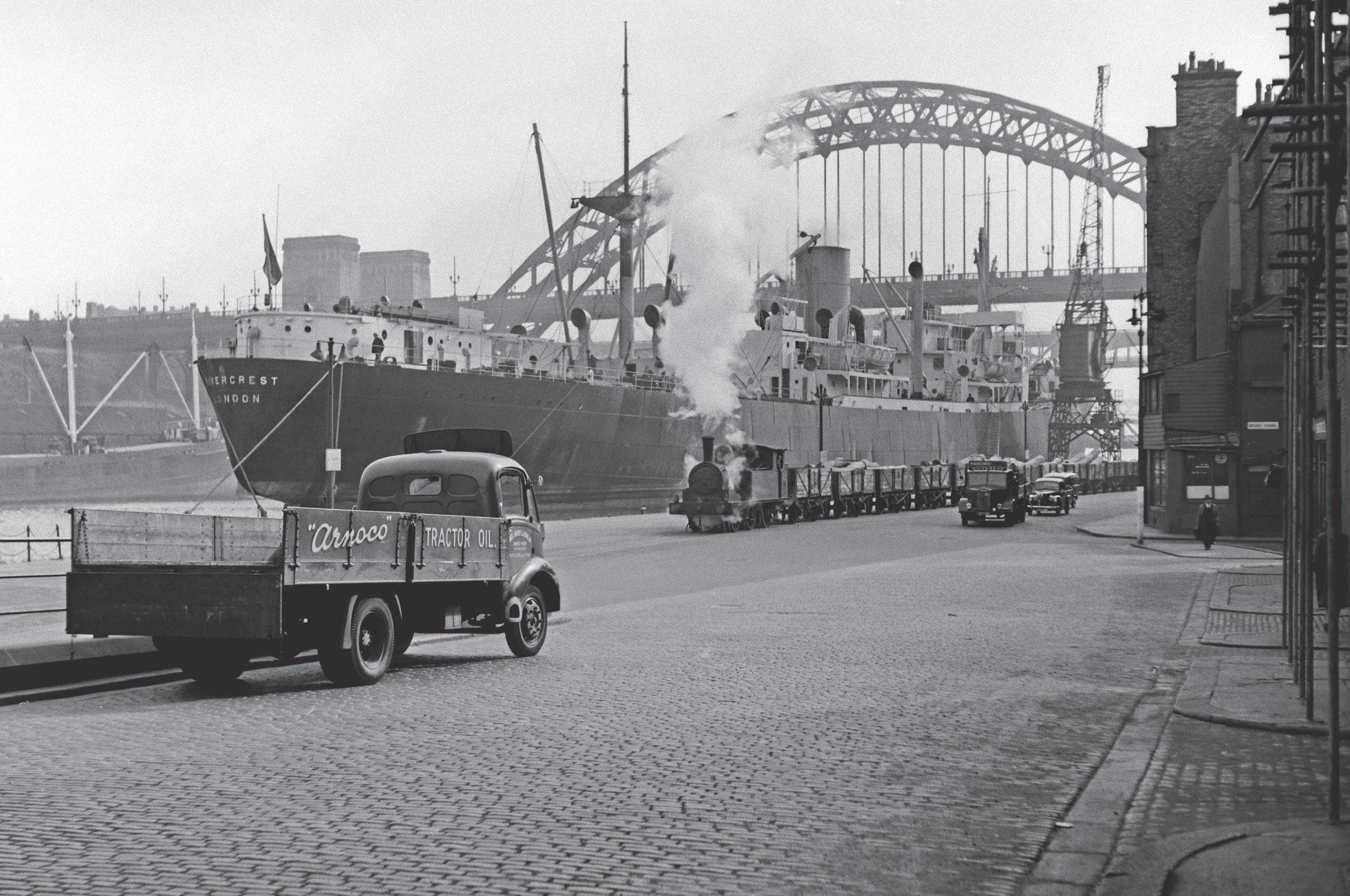
The transformation that has occurred at Central station is nothing compared to the changes that have taken place on the Quayside. The bridges survive, of course, with some newer additions, but the warehouses, transfer sheds and cranes that were off to the left of this undated photograph have been swept away and replaced by sculptures and wine bars. Former NER Class E (LNER J71) 0-6-0T No 68256, designed by Thomas W Worsdell, moves a train of five-plank wagons loaded with imported timber, presumably freshly unloaded from the tramp steamer Rivercrest of Elder Dempster Lines. The vintage road vehicles complete the picture. (Neville Stead Collection)

Left: Taken sometime in the early 1960s, a rather neglected looking Raven Class Q6 0-8-0, No 63431, rolls through the equally neglected Pelaw station with a long rake of 16-ton mineral wagons. Its destination could be any of the three lines that radiate from the junction behind the photographer. 63431 was built in 1920 and withdrawn in 1967. It is carrying a 52H shedplate, indicating its allocation to Tyne Dock. The CWS factory buildings are on the right. I wonder if that is the photographer’s Ford Anglia 100E parked near the footbridge? Q6 No 63395 and J27 No 65894 survive at the North Yorkshire Moors Railway in the care of NELPG. (Bill Bishop)
Right Top: On railtour duty on 6 November 1965, was Gresley Class V2 2-6-2 No 60886, seen taking water at Newcastle Central. The Locomotive Club of Great Britain’s “Border Counties Rail Tour” ran from Manchester to Carlisle, Newcastle and back to Manchester via York, employing six locomotives in total, including a Stanier ‘Jubilee’ 4-6-0, a Peppercorn K1 2-6-0 and a Hughes ‘Crab’ 2-6-0. The V2 was responsible for the Newcastle to Wakefield leg, and was withdrawn the following April. By this time, some BR regions had dispensed with steam completely. The north east succumbed in 1967 and steam was banished from the whole of British Railways in August 1968. (John Tolson)
Right Bottom: The 3,300hp English Electric Type 5 Deltics, with their high-speed, lightweight engines were designed to maximise power to weight ratio. Those allocated to Haymarket shed in Edinburgh were named after Scottish regiments, including No D9016 Gordon Highlander, photographed at Gateshead shed on 19 July 1965. Alongside are a BR Sulzer Type 4 and English Electric Type 3 No D6792. Understandably, the Deltics were disliked by steam enthusiasts, but they would attract an army of dedicated followers of their own, especially towards the end of their twenty year career. Seven are preserved, including the 1955 prototype and D9016, which is owned by Locomotive Services Ltd, and is on static display in Margate, Kent. (William Wright)

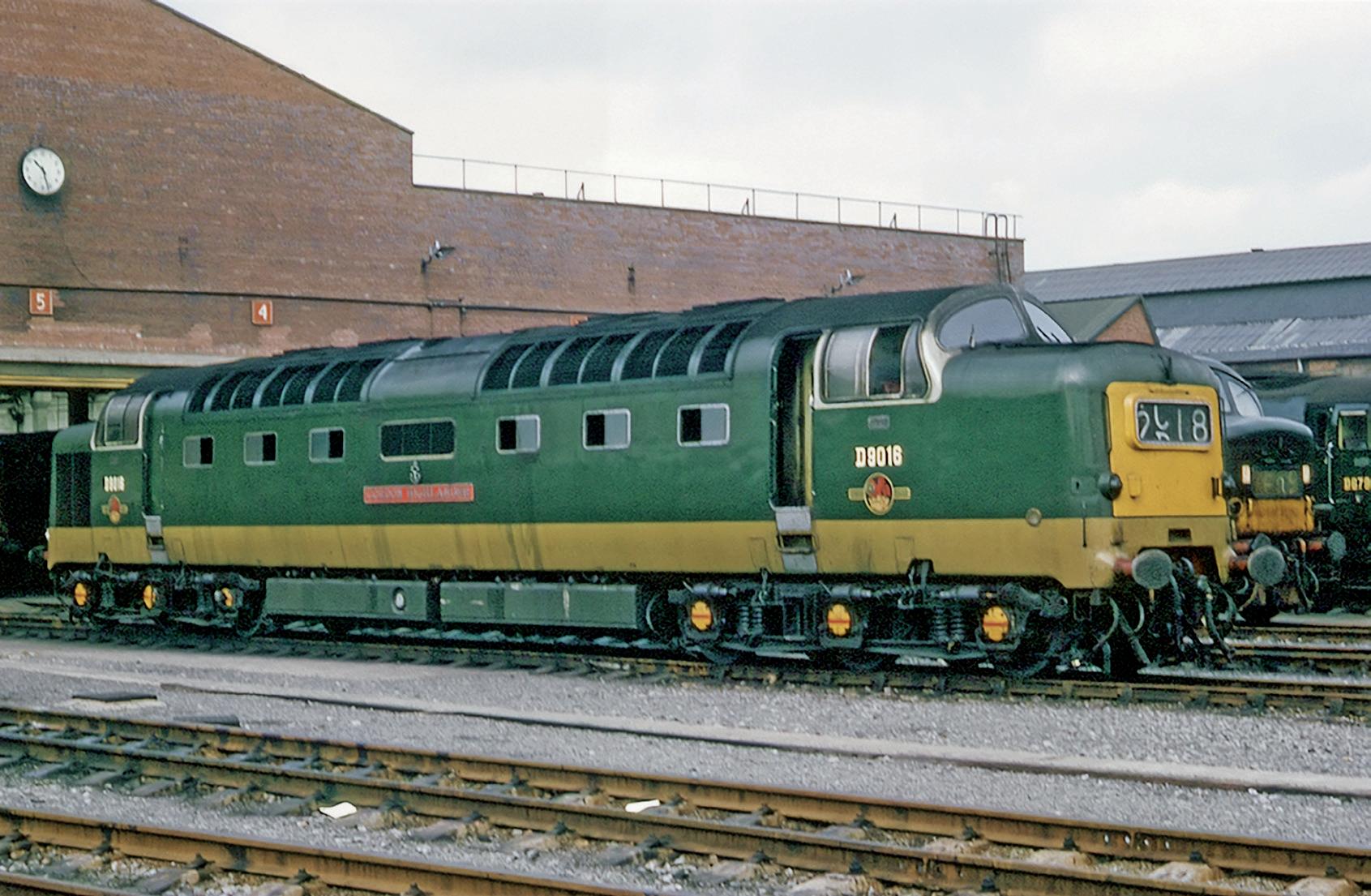

Synonymous with post-steam freight operations in the north east were the 1,750hp English Electric Co-Co Type 3s, later Class 37, of which 309 were built, including 67 at Robert Stephenson & Hawthorn in Darlington. On yet another railtour, No 37085, previously D6785, has arrived from Newcastle at Consett steelworks on 19 May 1979 with the Railway Pictorial Publications Railtours’ “The County Durham Crusader”, which started at King’s Cross. Many of these reliable workhorses are still in revenue-earning service today. The steelworks, meanwhile, closed in 1980 after 140 years, with the loss of 3,700 jobs. (G H Taylor)
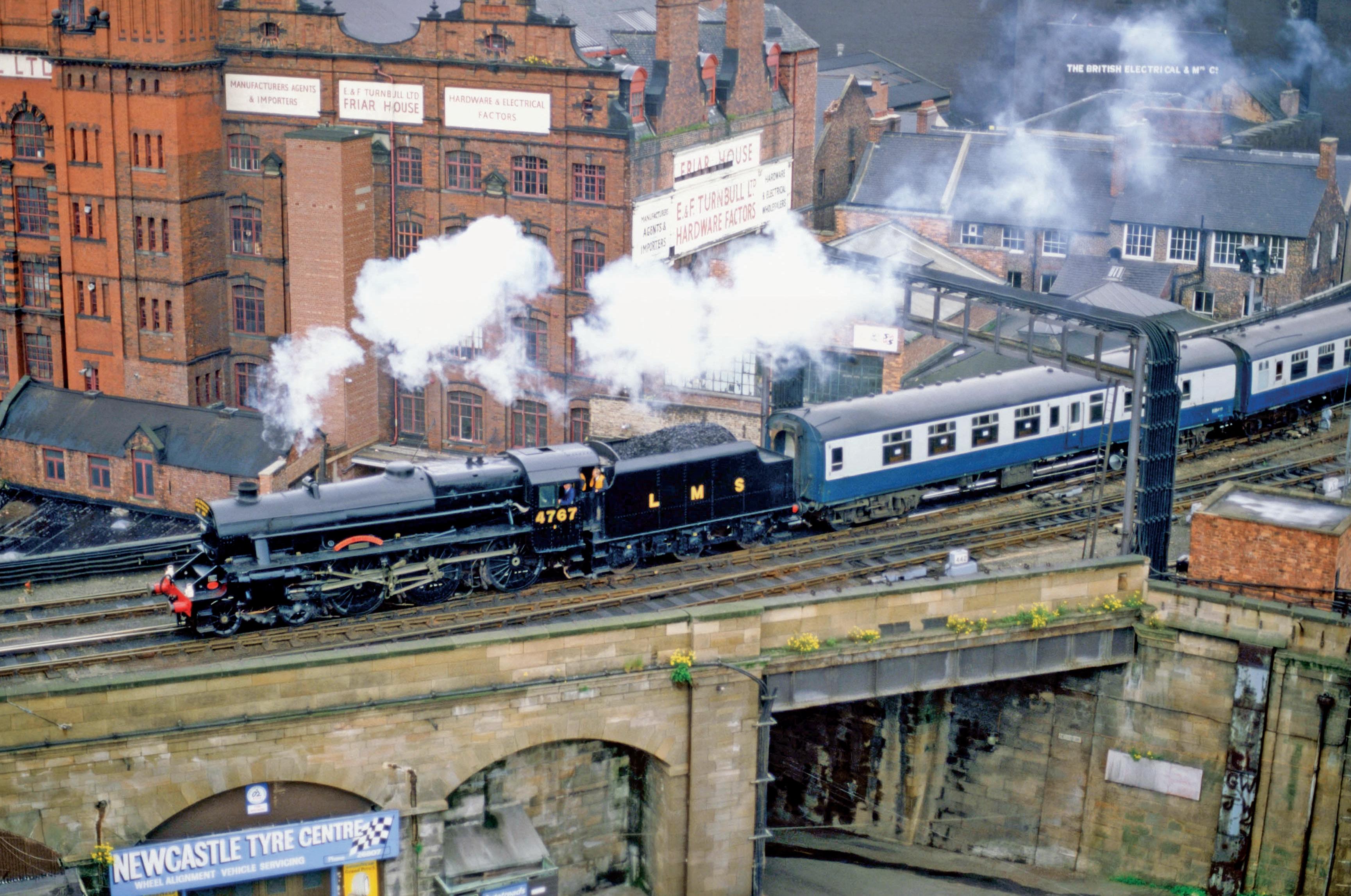
Just as 2025 marks the 200th anniversary of the Stockton & Darlington Railway, in 1981, the bicentennial of the birth of George Stephenson was celebrated. Wylam & District Round Table organised a charter train which made four round trips between Newcastle and Hexham on 6 June 1981. Motive power was provided by preserved LMSR Stanier ‘Black Five’ 4-6-0 No 4767. The locomotive was the only one of the 842-strong class to be fitted with Stephenson valve gear, and at the 1975 150th S&DR anniversary it was given the appropriate name George Stephenson. It was photographed from the Castle Keep as it took the curve onto the High Level Bridge. The headboard on the smokebox reads “George Stephenson Birthday Special 1781 1981”. (Bill Sharman)
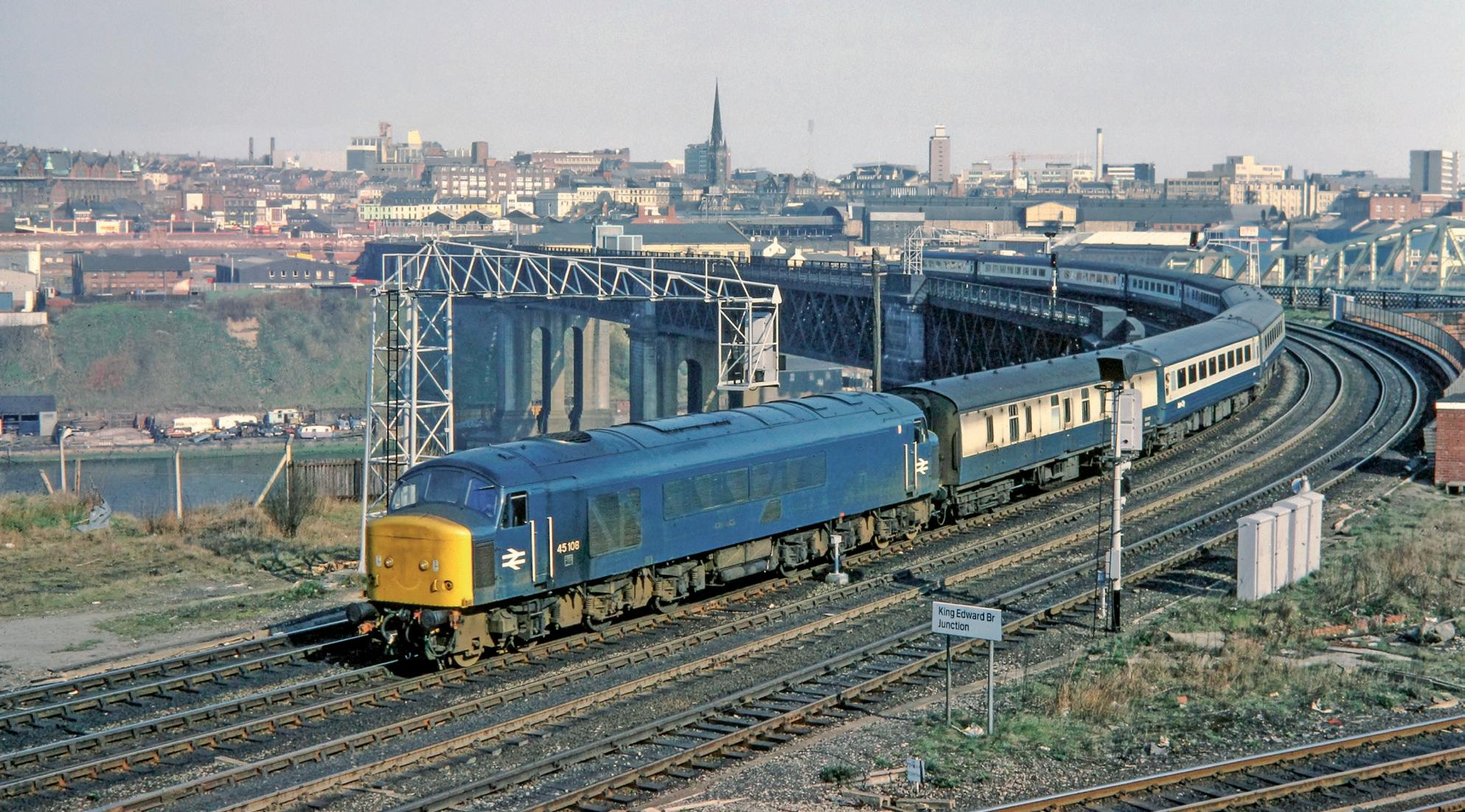
‘Newcastle’ is one of a series of 12 books being released in 2025 showcasing railway works and centres to commemorate ‘Railway 200’.
As Britain celebrates 200 years of rail travel, Newcastle and its surrounding region stand proudly at the heart of a revolution that changed the world. From the earliest wooden wagonways of the 17th century to the pioneering steam locomotives of George Stephenson, this book explores the north east’s unparalleled contribution to railway history.
Packed with fascinating insights, historical landmarks, and stories of the people who forged the railways, ‘Newcastle’ is an essential read for railway enthusiasts, history buffs, and anyone captivated by the industrial age’s greatest achievement.

£16.50


